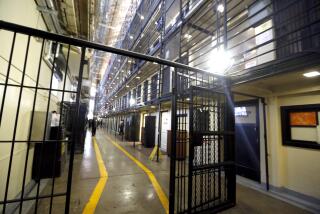Slain inmate Hugo Pinell was a target of prison gangs, his lawyer says
To prison rights activists and black militants on the outside, Hugo Pinell was the imprisoned legacy of a violent movement from the 1970s, one of the San Quentin Six whose failed attempt at a prison break left six people dead.
To his prison lawyer, Pinell was a target, a “marked man,” his life threatened by some of the very gangs he was alleged to have helped grow. That lawyer, Keith Wattley, says it was no accident Pinell was killed Wednesday just weeks after being released from isolation to a general prison yard.
MORE: How a wig and a handgun sent a prison into chaos 44 years ago
“The only mystery is, why after all these attacks and threats against him, they would send him out to be killed,” Wattley said by telephone Thursday.
California corrections officials said two inmates at the maximum-security prison outside Sacramento where Pinell was housed are suspected of stabbing to death the 71-year-old inmate. That in turn triggered a riot on the prison yard, involving some 70 inmates and lasting approximately 20 minutes, said department spokeswoman Terry Thornton.
A total of 29 inmates were injured, 11 taken to the hospital for treatment, and five admitted for care. One of those, a 29-year-old prisoner, remained in critical condition Thursday with severe head injuries and multiple stab wounds.
Thornton said that while the riot remains under investigation, she could not comment on Wattley’s allegations that prison officials knew Pinell was in danger, and that he had asked several months ago that Pinell be protected.
“The safety and security of all inmates is of utmost importance to CDCR,” she said.
Transcripts from a May 2014 parole board hearing contain references to threats against Pinell.
“There are multiple instances that show he’s been actually the victim of assaults by whites, by members of the [Black Guerrilla Family],” Wattley told the board, according to the transcript.
Pinell had spent nearly 45 years in solitary confinement, longer than any other prisoner in the state system. He was moved out of isolation at Pelican Bay State Prison in January 2014 after the state adopted new policies making active gang participation a requirement for an inmate to be kept segregated. Two weeks ago at his new prison, he was transferred to a general cellblock of high-security inmates. He was killed on the exercise yard with those inmates.
Pinell was sentenced to a life with the possibility of parole for a 1965 rape, and in 1971 attacked and killed a corrections officer at prison in Soledad.
In August of that same year, he joined prison militant George Jackson and five others in a violent escape attempt from San Quentin State Prison, in which three officers and two white inmates were killed. Jackson was shot and killed during the attempt. Pinell was convicted of assault for slitting the throats of two officers.
Parole commissioners focused on Pinell’s violent prison history, including multiple assaults on other inmates. Another prisoner in his own parole hearing testified that in 1978 Pinell attempted to recruit him to the Black Guerrilla Family. When the prisoner refused to join, he was set up for attack, according to allegations recorded in hearing transcripts.
“I could feel the knives going through me and chinking the cement on the other side,” the inmate testified.
Wattley said that after landing in solitary confinement, Pinell changed. In three decades, he had no disciplinary actions, a record confirmed by parole commissioners at their hearing. He hoped to eventually win parole, Wattley said.
“The story that has come out so far is about the monster that was put down,’” Wattley said. “I have never known him to be that.”
More to Read
Start your day right
Sign up for Essential California for news, features and recommendations from the L.A. Times and beyond in your inbox six days a week.
You may occasionally receive promotional content from the Los Angeles Times.







